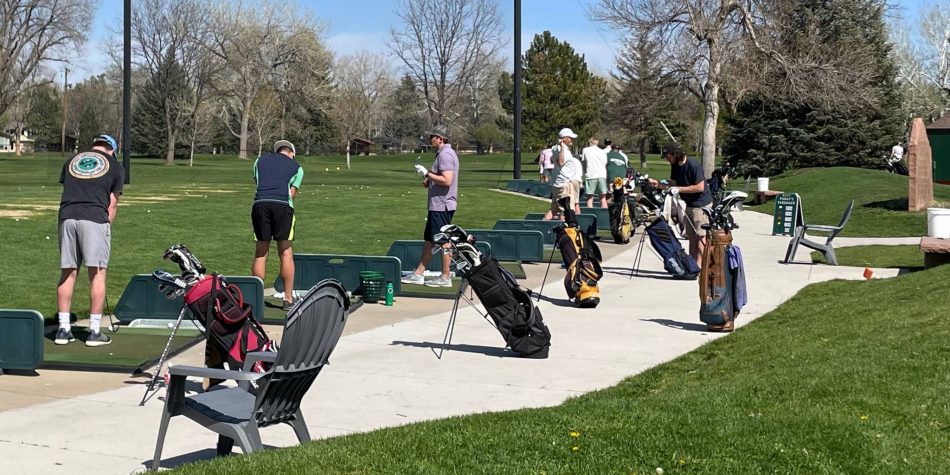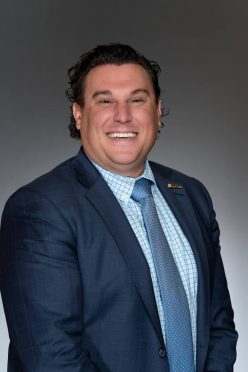Base your next golf trip out of Black Hawk’s Monarch Casino Resort Spa
Only 45 minutes from Denver is the perfect place to play after playing a round
By Jim Bebbington
With tee boxes regularly packed to the gills, the golf industry is asking whether customer loyalty even matters anymore.

One golf industry organization is saying: Yes it does. And it is advocating courses and golf businesses start paying more attention to their customers now before the inevitable slowdown.
The National Golf Foundation last month released the results of a survey that found very few ‘core golfers’ feel their regular courses or golf businesses make them feel recognized.
For women golfers – who currently are the largest growing segment of players entering the game – the responses are even worse. Of all the women respondents to a survey that asked how golf businesses are doing at recognizing their regular customers, a whopping 45 percent of women gave their courses the lowest grade: “I don’t feel any different from non-customers; there’s no real effort to recognize my loyalty.”
Across both genders, a total of 77 percent of ‘core golfers’ gave their courses the same rating or one slightly higher, neutral (“Golf brands/businesses don’t really know who I am; I feel like just another customer.”)
“The path to this paradox seems gradual but clear,” NGF Chief researcher David Lorentz wrote. “As golf evolved from a club-centered pastime to a diverse, $100 billion industry, the emphasis naturally shifted toward commercialization with measurable outputs — better equipment, faster greens, lower scores — things that could be marketed, compared and sold. These tangible innovations have successfully expanded business opportunities, and in many respects improved the golfer experience, but they’ve also inadvertently overshadowed the more relational (and perhaps equally vital) dimensions of business and customer success.”
Translated only slightly, Lorentz writes that the golf industry may be popular now, but businesses that fail to make a deeper connection with their customers tend not to do well long-term.
“… people switch allegiances with a swipe, viral trends reshape preferences overnight, and corporate longevity continues to decline,” he wrote. “The power dynamic between brand and consumer has fundamentally shifted, making loyalty harder to earn and easier to lose than ever before.”
Their data indicated only half of golfers could recall any interaction at a course that left them feeling special or valued and one-third said the staff where they play most often don’t know their name.
“The inconvenient truth is that our industry has devoted considerable resources to perfecting the technical experience while often under-investing in the human one,” Lorentz wrote.
Colorado golf leaders say the survey seems to illustrate how busy local courses are, but it might also need to step back and examine not just the feelings of ‘core golf’ participants, but all participants.
With the flood of new players packing local courses, golf course employees may simply be overwhelmed and unable to get out from behind the cash register to provide one-on-one service, they say.
“Yes, (new players) play a bit slower sometimes and may struggle on the course, but without them, this game we love will regress to the vanilla product that it used to be,” said Tom Buzzbee, a longtime Colorado teaching professional and retired director of golf at Boulder’s Flatirons Golf Course. “Even the committed players will suffer if (they stop coming) as course improvements will start to slow and conditions will deteriorate as lack of revenue will pull the state of the industry down to pre-pandemic conditions when we were struggling for sure.”

Steven Bartkowski, executive director of the Colorado PGA, said PGA staff who run courses want to provide good service but courses need to have enough staff to do so.
“I see that report and when you have demand like this and you’re this busy (the question is) are the staffs appropriately staffed?” he said. “If you have fewer members you can take a more personal touch.”
Bartkowski said his members – PGA professionals who run most Colorado courses – are specifically trained to provide good customer service. The overwhelming tee sheets, however, make that difficult sometimes.
“PGA professionals are the gold standard,” he said. “Some pros are stuck behind the counter just making the business operate. I think it’s a sign of where we are as an industry and (something we need to) be cautious about.”
Buzzbee said as the courses have become more busy and he and his staff ran programs to welcome and encourage new, younger, non-traditional golfers, he did hear complaints from some long-time customers that not enough was being done for them too.
“This “entitled” attitude of the committed players is what scared away new players pre-COVID and kept growth of the game down,” he said. “We constantly heard “I don’t feel welcome.” So, yes, public golf operators did finally start to focus on new players and being nice to them. Guess what? It worked! That friendly attitude combined with a post-pandemic interest in the game is why our industry is flourishing. Sorry everyone, but committed players are not the reason for our success. I have told them many times when they fuss about not enough tournaments for them, etc, that they better be nice to the newbies because they are taking lots of lessons, buying stuff and eating in the restaurants. They bring their friends too. That’s why our game is so popular.”
Jim Bebbington is the Director of Content at Colorado AvidGolfer and can be reached at [email protected]
Colorado AvidGolfer Magazine is the state’s leading resource for golf and the lifestyle that surrounds it, publishing eight issues annually and proudly delivering daily content via coloradoavidgolfer.com.
Only 45 minutes from Denver is the perfect place to play after playing a round
Play one of Colorado’s great Pete Dye courses for less